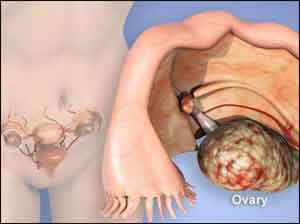- Home
- Editorial
- News
- Practice Guidelines
- Anesthesiology Guidelines
- Cancer Guidelines
- Cardiac Sciences Guidelines
- Critical Care Guidelines
- Dentistry Guidelines
- Dermatology Guidelines
- Diabetes and Endo Guidelines
- Diagnostics Guidelines
- ENT Guidelines
- Featured Practice Guidelines
- Gastroenterology Guidelines
- Geriatrics Guidelines
- Medicine Guidelines
- Nephrology Guidelines
- Neurosciences Guidelines
- Obs and Gynae Guidelines
- Ophthalmology Guidelines
- Orthopaedics Guidelines
- Paediatrics Guidelines
- Psychiatry Guidelines
- Pulmonology Guidelines
- Radiology Guidelines
- Surgery Guidelines
- Urology Guidelines
New combination therapy found effective in ovarian cancer

Researchers at The Wistar Institute have found that combining PARP inhibitors, recently approved for the treatment of BRCA-mutant ovarian cancer, with another small molecule inhibitor was effective to treat ovarian cancers without BRCA1 and BRCA2 gene mutations. This study was published online in Cell Reports.
Ovarian cancer is the most lethal gynecological malignancy and therapeutic options remain limited. Mutations in the BRCA1 and BRCA2 genes, which function in the repair of DNA damage and in maintaining the stability of the genetic material, are common and have a causative role in the development of this type of cancer. Cells with a defect in these genes have non-functional BRCA proteins and cannot properly repair DNA damage. As a result, they are more likely to develop further genetic alterations that can lead to cancer.
"By blocking another member of the DNA repair pathway, PARP inhibitors are an effective strategy to kill BRCA-mutant cancer cells and have recently been approved for the treatment of ovarian cancer, but how to expand their utilities into BRCA-proficient cancers remained to be explored," said Rugang Zhang, Ph.D., deputy director of The Wistar Institute Cancer Center, professor and co-program leader of the Gene Expression and Regulation Program. "We identified an effective strategy to sensitize BRCA-proficient ovarian cancers to PARP inhibitors and extend their clinical efficacy to a larger group of patients."
Previous research has shown that, in the absence of BRCA mutations, simultaneous inhibition of other DNA repair proteins, such as WEE and TOPBP1, can sensitize cancer cells to PARP inhibitors. Zhang and colleagues found that blocking the activity of the BRD4 transcriptional regulator with a small molecule inhibitor resulted in reduced expression of DNA repair proteins, including WEE and TOPBP1. Importantly, this resulted in enhanced sensitivity of BRCA-proficient ovarian cancer cells to a PARP inhibitor, as the combination of both inhibitors was able to induce cell death.
Mechanistically, inhibition of BRD4, which belongs to the BET family of proteins, allowed cells with DNA damage caused by the PARP inhibitor to proceed into cell division without repairing the damage, thus resulting in cell death by a phenomenon called mitotic catastrophe.
The team tested the combination of PARP and BET inhibitors in vivo in a mouse model of ovarian cancer with normal BRCA1 and BRCA2. While neither of the two inhibitors alone had an effect on tumor growth, the combination of the two resulted in significant reduction of tumor burden without any overt toxicity.
"The combined use of these inhibitors can be potentially applied to a broad spectrum of malignancies regardless of the BRCA genes mutational status," said Sergey Karakashev, Ph.D., co-first author of the study and a postdoctoral researcher in the Zhang Lab. "Therefore, we anticipate that our work will have far-reaching applications in the development of novel combinatory cancer therapeutics."

Disclaimer: This site is primarily intended for healthcare professionals. Any content/information on this website does not replace the advice of medical and/or health professionals and should not be construed as medical/diagnostic advice/endorsement or prescription. Use of this site is subject to our terms of use, privacy policy, advertisement policy. © 2020 Minerva Medical Treatment Pvt Ltd